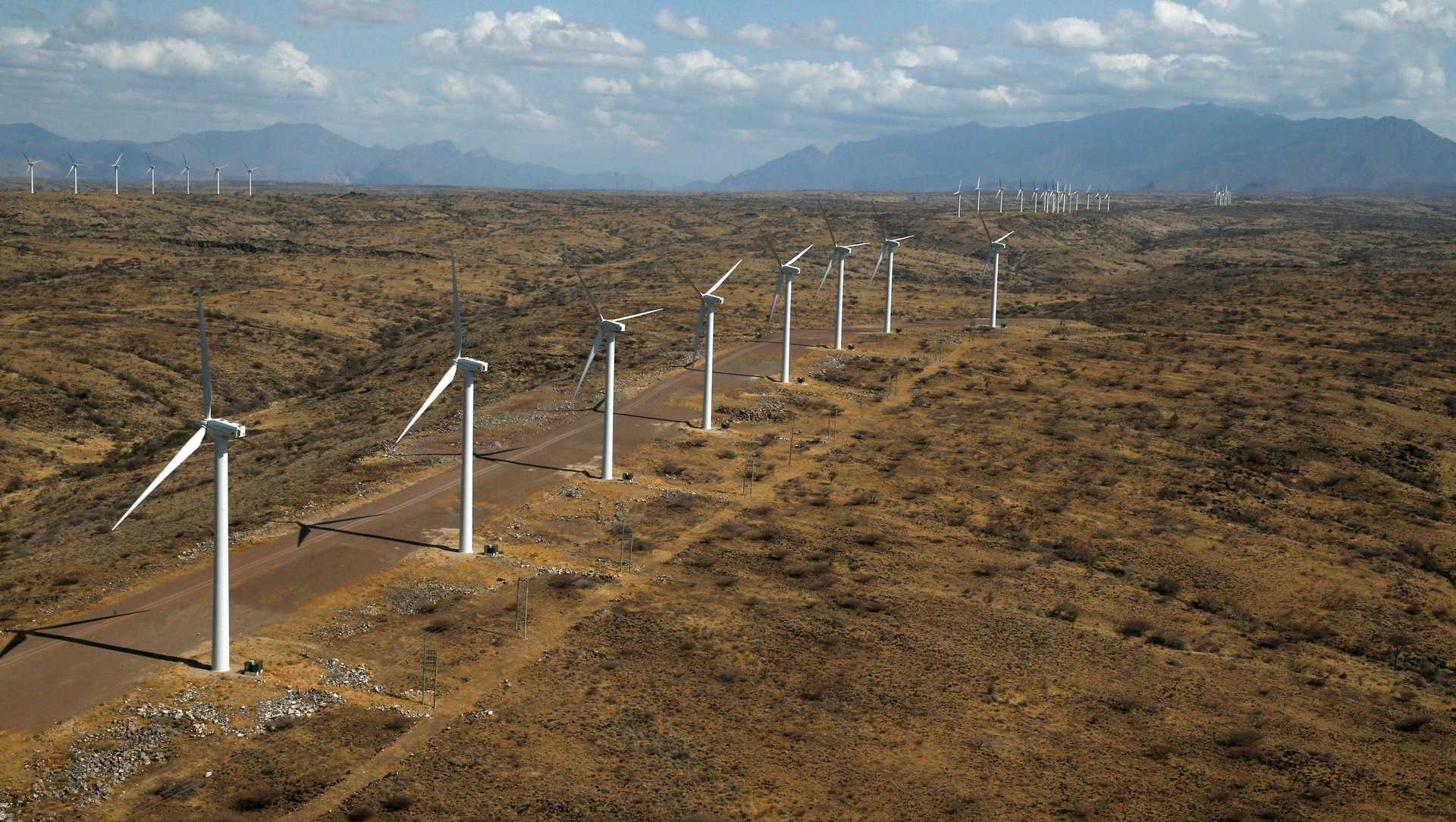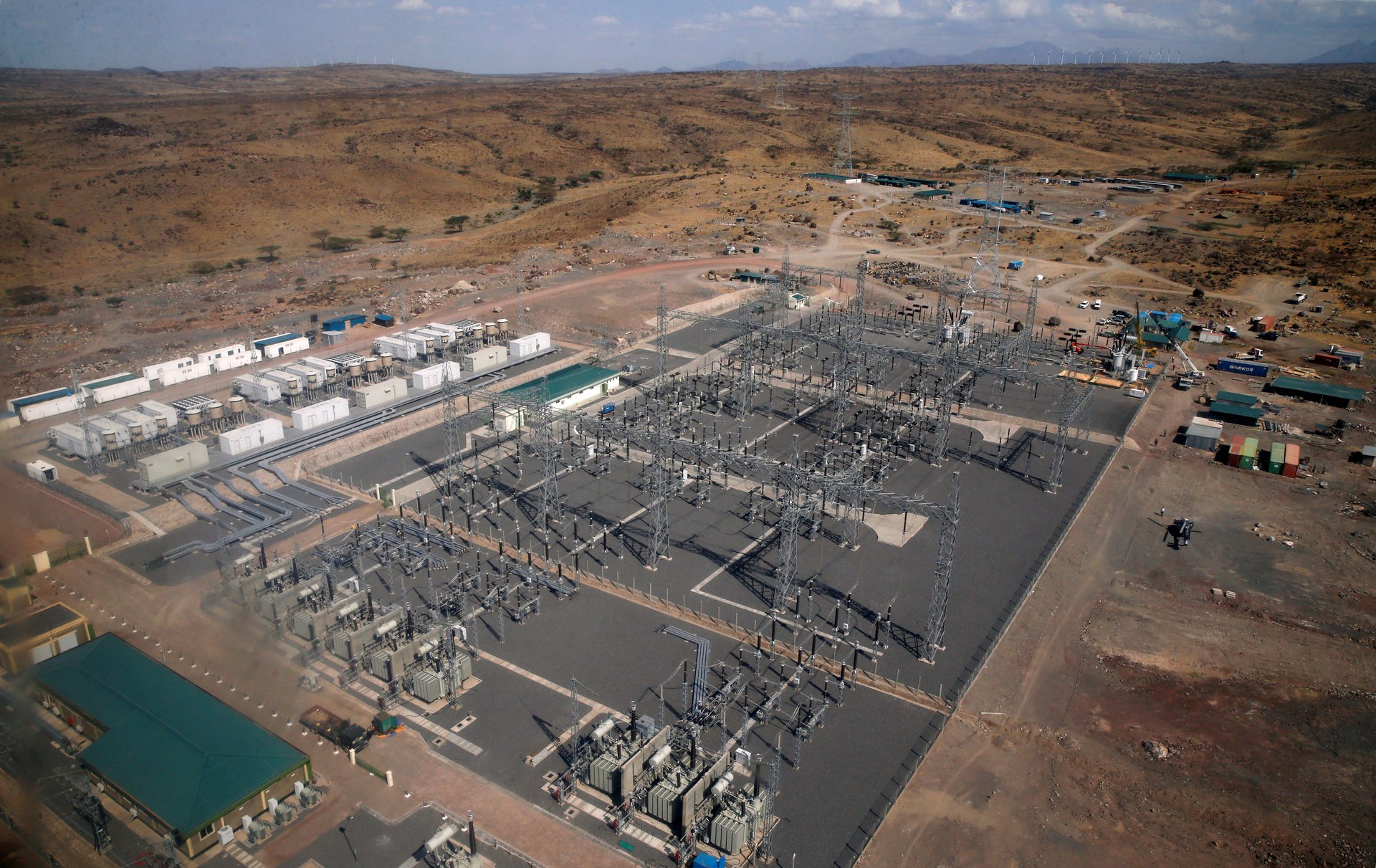Africa’s largest wind power project is now open in Kenya
Kenya continues to make giant strides in its dedication to renewable energy.


Kenya continues to make giant strides in its dedication to renewable energy.
The East African nation has unveiled Africa’s largest wind power project in a gusty and rocky desert stretch located 600 kilometers (372 miles) north of the capital Nairobi. The Lake Turkana Wind Power farm consists of 365 turbines with a capacity to dispense 310 megawatts of reliable, low-cost energy to Kenya’s national grid.
The wind farm is located in the Turkana Wind Corridor, where strong winds traveling between Mount Kulal to the north and Mount Nyiru to the south create ideal wind conditions to generate power from wind turbines.
The Turkana plant was funded by a consortium of African and European companies, with Kenya expected to buy power at a fixed price over a 20-year period. The project is aimed at boosting Kenya’s electricity supply, moving the country away from the dependence on fossil fuels, and meeting its ambitious goal of 100% green energy use by 2020. Officials also hope scaling renewable investment will reduce manufacturing production costs and in turn, create much-needed jobs.
During the inauguration, president Uhuru Kenyatta called the wind plant a “monumental feat” and said it showcased Kenya’s commitment to pursue clean sources of energy and lower greenhouse gas emissions.

Kenya generates about 70% of its electricity from renewable sources, and the country is among the world’s leading countries in the geothermal sector. Renewable projects like the Garissa solar power and the Ngong wind plant have also increased Kenya’s installed electricity capacity in recent years.
Increasingly, off-grid renewable energy companies like M-Kopa, Azuri, and Mobisol have stepped up with services that can reach rural and urban dwellers where traditional grids have not been extended. These companies mostly offer pay-as-you-go solar power that users can buy and manage through their mobile phones.
Since the Turkana project was connected to the national grid last September, Kenyatta said the plant injected more than 1.2 billion kilowatt-hours of electricity and saved taxpayers up to 8 billion shillings ($77.5 million) from reduced usage of diesel-generated thermal power.
Despite these improvements, just 6.7 million Kenyan customers were connected to the grid as of 2018. These customers continue to receive inflated bills because of corrupt syndicates within the national electric utility company Kenya Power. Renewable energy projects like the Turkana wind farm have also faced challenges including securing funding and dealing with land compensation problems.
Activists have also accused the government of betraying its own green energy commitments with plans to establish a coal-powered plant in the idyllic, UNESCO-protected Lamu archipelago. In late June, a court halted the plan for the coal plant and ordered the developer to undertake a new environmental assessment.
Sign up to the Quartz Africa Weekly Brief here for news and analysis on African business, tech and innovation in your inbox